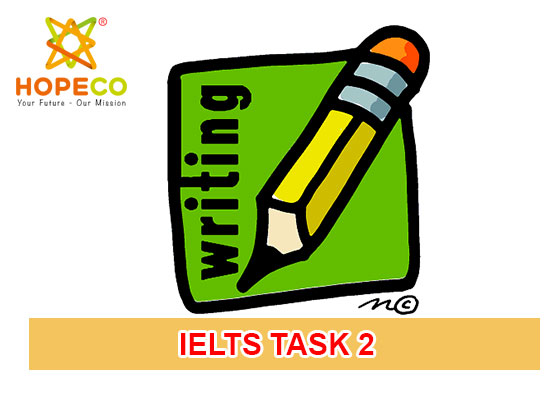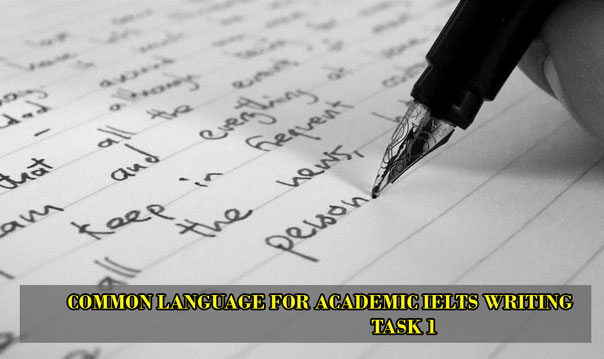Tìm Hiểu Cách Chấm Điểm Trong Bài Thi Viết IELTS Task 2

Some people think that universities should provide graduates with the knowledge and skills needed in the workplace. Others think that the true function of a university should be to give access to knowledge for its own sake, regardless of whether the course is useful to an employer.
What, in your opinion, should be the main function of a university?
Give reasons for your answer and include any relevant examples from your own know-ledge or experience.
Write at least 250 words.
What knowledge and skills should universities provide has been argued for many years. Some people think that the true function of universities provide knowledge for their own purpose, but nowadays, more and more people point out that universities should provide graduates with the knowledge and skills according to the workplace.
The first reason for universities should provide these knowledge and skill is the students’ needs. Obviously, the most of the students go to university purpose of is to get some knowledge and skills which could make them have the ability to get a job. If a university does not provide these knowledge and skills, the students might not get a job and they would be very disappointed. As a result, the university would lose its students.
Moreover, providing knowledge and skills needed in the workplace maks a university progress. The new skills and information always are initiated in the workplace, so focusing on the needs of the workplace the university could get sound strategies to do research and make it more mordenization.
Lastly, providing these knowledge and sills could benefit our country which usually gives a financial support to universities. Having these knowledge and skills, students are more easy to get a job, and this can make our countries’ economy strong.
In conclusion, it can be said that providing the knowledge and skills which the workplace needs is every universities’ basic function.
Score: 5
The examiner’s comment:
This answer is less than 250 words and it does not address all parts of the question, so it loses marks. Nevertheless, some relevant ideas and a position on the issue are presented. Ideas are organized and the structure of the answer is clearly signaled. There is some good use of linkers, but there is also a lot of repetition due to inadequate use of referencing and substitution. The high level of repetition [‘knowledge and skills’ is repeated nine times] also indicates limitations in range of vocabulary although, apart from language given in the rubric, there is just sufficient additional vocabulary for the task. The answer includes attempts at complex sentence forms, but these are generally awkwardly phrased and tend to require some re-reading to understand. Nevertheless, there are examples of accurate complex structures.
(Trích từ trang 169 của quvển Cambridge IELTS 7)
❖ Bài luận trên được triển khai theo dàn ý sau:
- Quan điểm: Chức năng chủ yếu của đại học là cung cấp kiến thức và kỹ năng liên quan đến việc làm trong tương lai của sinh viên (đáng tiếc là thí sinh không thể hiện rõ quan điểm này ở đoạn nhập đề).
- Nguyên nhân 1: Mục đích học lên đại học của học sinh là tìm việc làm trong tương lai.
- Nguyên nhân 2: Kiến thức và kỹ năng ở nơi làm việc còn mới mẻ. Nếu chú trọng nghiên cứu nội dung này thì đại học sẽ càng phát triển (theo cách diễn đạt của thí sinh là hiện đại hóa).
- Nguyên nhân 3: Đất nước sẽ được lợi về kinh tế khi sinh viên có việc làm, từ đó mới có thể đầu tư về tài chính cho công trình nghiên cứu.
❖ Hãy tìm lỗi trong những phần được gạch dưới trong bài.
❖ Đọc kỹ những chỗ in đậm trong lời nhận xét của giám khảo. Đây chính là những nhược điểm của bài viết, cũng là nguyên nhân khiến bài viết bị điểm thấp.
❖ Cambridge IELTS 7 chỉ đưa ra điểm số của bài viết này là 5 điểm chứ không nói rõ điểm số đó được tính như thế nào. Để hiểu rõ quy trình chấm điểm bài viết này của giám khảo, bạn hãy xem phần phân tích sau đây.
| Tiêu chí chấm điểm | Lời nhận xét của giám khảo | Nội dung tương ứng trong bảng tiêu chí chấm điểm | Điểm | |
| 4 tiêu chi chấm điểm chính |
Task Response |
Bài viết thiên về một quan điểm: it does not address all pans of the question. | Tương ứng với tiêu chí 5 điểm: addresses the task only partially | 5 |
| Coherence and Cohesion |
Bài viết đuợc đánh giá có khá nhiều ưu điểm nhưng nhược điểm là: there is also a lot of repetition due to inadequate use of referencing and substitution. | Tương ứng với tiêu chí 5 điểm: may be repetitive because of lack of referenc-ing and substitution | 5,5 | |
| Lexical Resource |
Có một cụm từ được lặp lại chín lần: indicates limitations in range of vocabulary. | Tương ứng với tiêu chí 5 điểm: uses a limited range of vocabulary | 5 | |
| Grammatical Range and Accuracy | Cố gắng dùng câu phức nhưng dùng không chính xác (The answer includes attempts at complex sentence forms, but...). Và câu đánh giá cuối cùng rất xác đáng: Nevertheless, there are examples of accurate complex structures. |
Tương ứng với tiêu chí 5 điểm: attempts complex sentences but these tend to be less accurate | 5,5 | |
| Các yếu tố khác | Underlength | Bài viết có tổng cộng 232 từ (less than 250 words). | trừ 0,5 | |
Cách tính điểm:
- Cộng bốn điểm số tương ứng với bốn tiêu chí chấm điểm chính, sau đó lấy điểm trung bình rồi làm tròn: (5 + 5,5 + 5 + 5,5)/4 = 5,25, làm tròn thành 5,5.
- Xem xét các yếu tố khác và trừ điểm nếu bài viết phạm lỗi: 5,5 - 0,5 = 5.
Như vậy, điểm số cuối cùng của bài viết này là 5.
Mọi thông tin chi tiết vui lòng liên hệ:
DU HỌC UNIGLOBE
10/3 Nguyễn Thị Minh Khai, Phường Đa Kao, Quận 1, TP.HCM
ĐT: (08) 35 173 345 – 35 173 678
Email: info@uniglobe.edu.vn
Website: www.uniglobe.edu.vn
Mọi thông tin chi tiết vui lòng liên hệ:
DU HỌC UNIGLOBE
10/3 Nguyễn Thị Minh Khai, Phường Đa Kao, Quận 1, TP.HCM
ĐT: (08) 35 173 345 – 35 173 678
Email: info@uniglobe.edu.vn
Website: www.uniglobe.edu.vn






bình luận